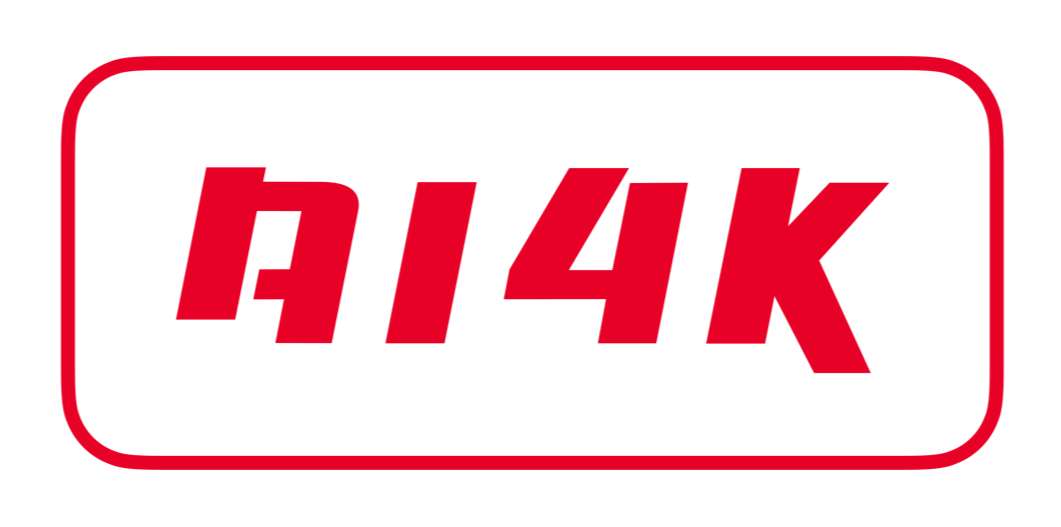AI Image Generator
An AI image generator is a software application or system that uses artificial intelligence, particularly generative algorithms and deep learning techniques, to create images from scratch or modify existing images. These generators can produce a wide range of visual content, from realistic photos and artwork to abstract designs.
If you want to check out what to expect from an AI image generator, check out AI Inspiration to take a look at our Midjourney images. Check as well our comprehensive list of over 100 AI image generators.
AI Image Generation: Key Aspects
- Generative Adversarial Networks (GANs): GANs are a popular framework used in AI image generators. GANs consist of two neural networks, a generator, and a discriminator, which work together to create and evaluate images. The generator generates images, while the discriminator assesses their authenticity, leading to the refinement of image generation over time.
- Art Creation: AI image generators are used by artists to create digital art, generate unique and creative designs, and experiment with different styles and aesthetics.
- Face Generation: AI image generators can create realistic human faces that are often used in various applications, including video games, character design, and avatars.
- Photorealistic Imagery: Some AI image generators can produce highly realistic images that mimic photographs, making them useful for content creation, design, and visualization.
- Style Transfer: These generators can apply artistic styles to existing images, transforming them into different artistic expressions.
- Data Augmentation: AI image generators are used in machine learning for data augmentation, creating additional training data for image recognition and classification tasks.
- Abstract Art: AI generators can create abstract, surreal, or avant-garde artwork, which may be used for artistic expression or interior design.
- Content Creation: Some generators are capable of producing images based on text descriptions, making them useful for illustrating stories, articles, or concepts.
- Custom Image Generation: Users can input specific parameters or requirements to generate images tailored to their needs, such as generating landscapes, animals, or objects with desired characteristics.
- Image Manipulation: AI image generators can modify existing images by adding or removing objects, changing backgrounds, and applying visual effects.
- Meme Generation: AI can generate memes by creating humorous or relatable images that often include text overlays.
- Game and Virtual World Assets: Game developers use AI image generators to create characters, assets, and environments for video games and virtual worlds.
Free AI Image Generators
Adobe Firefly
AI image generator that creates images from text prompts.
Microsoft Bing Image Creator
AI art generator powered by DALL-E that creates images from text.
Microsoft Designer
AI tool that generates graphic designs like posters from text prompts.
CLIP Interrogator
Analyzes images and suggests text prompts to recreate similar images.
LeiaPix
Upload an image and turn it into a 3D animation.
IllusionDiffusion
A tool to create AI illusion art.
Imagine
Create art, images and videos with text and AI capabilities.
PhotoBooth
Fun way to take AI-enhanced selfies.
Canvas
Automatically generates high quality product photos from descriptions.
Fotor
Powerful AI image & art generator, Fotor offers everyone revolutionary access to create artwork.
Free pix
Free AI image generator.
Craiyon
Create AI Art with our free AI image generator.
Picsart
Convert words into an image in mere seconds with the Picsart AI Image Generator.
Lexica.art
The state of the art AI image generation engine.
Dream Studio
DreamStudio is an easy-to-use interface for creating images using the latest version of the Stable Diffusion image generation model.
Scribble Diffusion
AI that transforms simple sketches into high quality images.
AI Image Editor
An AI image editor is a software application or tool that utilizes artificial intelligence (AI) and machine learning techniques to enhance, manipulate, or edit images automatically. These tools are designed to streamline the image editing process, making it more accessible and efficient for users who may not have extensive graphic design skills.
AI Image Editors: Key Features and Functions
- Image Enhancement: AI image editors can automatically enhance the quality of images by adjusting brightness, contrast, color balance, and sharpness to improve overall visual appeal.
- Background Removal: Many AI image editors have the capability to remove the background from images, making it easier to isolate subjects or objects.
- Object Recognition: AI can identify objects or subjects within images, allowing for more precise edits and manipulations.
- Image Restoration: These tools can restore old or damaged photos, reducing imperfections, tears, and color fading.
- Artistic Filters: AI can apply various artistic filters, effects, and styles to transform images into different visual styles, such as paintings or sketches.
- Face Beautification: Some AI image editors offer features to enhance facial features, smooth skin, and correct imperfections.
- Content Aware Editing: AI can intelligently fill in missing or removed parts of an image, ensuring a seamless result.
- Image Super-Resolution: AI image editors can increase the resolution of images, making them sharper and more detailed.
- Automated Crop and Composition: AI can suggest or automatically apply crop and composition adjustments to improve the visual impact of an image.
- Image Recognition and Tagging: AI can recognize objects, scenes, or people within images, helping with image categorization and tagging.
- Stylized Text Addition: Some AI editors can add text to images in a way that complements the content and style of the image.
- Color Correction and Grading: AI image editors can correct color imbalances and apply color grading to achieve a specific mood or look.
Free AI Image Editors
Image Enlarger
Upscales image size without loss of quality using AI.
GFPGAN
AI tool that enhances images by upscaling quality and restoring details.
Background Blur
Blurs backgrounds of images within seconds.
Remove.bg
Removes backgrounds from images automatically within seconds.
Background Eraser
Instantly remove unwanted backgrounds from photos with AI.
Magic Eraser
Removes objects from photos automatically using AI.
Magic Studio
Image enhancement tool to magically transform pictures with AI.
Palette
AI tool that colorizes black and white images automatically.
AI Content Generation
AI content generation, also known as artificial intelligence content generation, refers to the use of artificial intelligence and machine learning techniques to create written, visual, or audio content automatically. This content can range from simple text to more complex pieces like articles, reports, artwork, or music. AI content generation has become increasingly popular across various industries and applications.
AI Content Generation requires Prompts: please check our Free Prompts here. And click here for a full list of AI Content Generators.
AI Content Generators: Key Aspects
- Text Content Generation: AI can generate written content on a wide range of topics, from news articles and blog posts to product descriptions and marketing copy. This is particularly valuable for content marketing and online publishing.
- Automated Reports: AI systems can generate detailed reports, summaries, and analyses of data, making it useful for data-driven industries such as finance, analytics, and research.
- Copywriting and Advertising: AI can assist in creating compelling ad copy, slogans, and marketing materials, optimizing content for specific target audiences.
- Content Summarization: AI can generate concise summaries of longer articles or documents, making it easier for users to quickly grasp the key points.
- Language Translation: AI-powered translation tools can quickly and accurately translate text from one language to another, improving global communication.
- Chatbots and Virtual Assistants: AI-driven chatbots and virtual assistants can generate text responses to user queries, enabling real-time interactions and customer support.
- Art and Design: AI can create visual content, including digital art, illustrations, and graphic design elements.
- Music Composition: AI can compose original music and generate melodies, harmonies, and even entire compositions.
- Video Content Generation: AI can assist in creating video content, including scriptwriting, voiceovers, and even automated video editing.
- Content Personalization: AI can tailor content to individual users based on their preferences and behavior, creating a more personalized user experience.
- Social Media Posts: AI can generate social media posts, captions, and hashtags to streamline social media marketing efforts.
Free AI Content Generators
Kickresume
AI tool that helps create professional resumes from basic user input.
GPTZero
AI plagiarism checker that detects if text is human or machine generated.
Perplexity.ai
Perplexity.ai is an answer engine that uses large language models to deliver accurate answers to complex questions, and includes the references.
Picsart AI Writer
Collection of AI tools like ad copy generator, product descriptions etc.
YouTube & Article Summary
Chrome extension that summarizes videos and articles via ChatGPT.
Engage AI
Chrome extension that helps draft relevant LinkedIn comments using AI.
Socratic by Google
AI tool that answers homework questions by scanning photos of questions.
Gamma App
AI tool that automatically generates presentation decks from prompts.
Tutor AI
AI tool that generates full online courses based on topics given as prompts.
ChatPDF
Allows users to chat and ask questions about PDF documents.
Quizify
AI tool that generates quizzes on various topics with images and explanations.
Codeium
Helps developers understand, modify, and test unfamiliar codebases using natural language.
Any Summary
A tool to summarize long documents, images and audio/video files.
FlowGPT
Useful ChatGPT prompts.
Humata
Upload documents and then ask it questions.
AI Suggests
All-in-one content creation platform that generates fresh content with AI.
ChefGPT
Digital chef app with AI features to assist with cooking.
Easy-Peasy AI
Generate amazing content 10x faster using AI.




